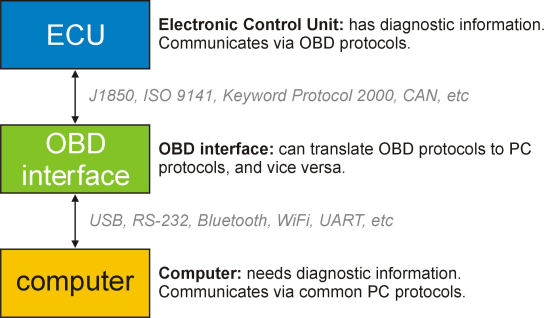Communication protocols used in modern vehicles are incompatible with standard computer protocols (RS-232, USB, and so on). An OBD adapter (sometimes referred to as “vehicle interface adapter”) is an electronic device that allows a computer to access the vehicle network. It is similar in operation to a computer modem or a gateway, in that it translates messages from one protocol to another.
Normally, the data flows both ways — to and from the ECU. For example, in order to display the RPM or trouble codes, the following series of events must take place:
- Software sends a request for RPM to the OBD adapter via one of the standard channels (e.g., USB).
- OBD adapter receives the request, and retransmits it to the ECU on one of the OBD protocols (e.g., J1850).
- The ECU responds with the data, the OBD adapter relays the reply back to the software.
- The software decodes the reply, and displays it to the user.

See also: Choosing an OBD Adapter

